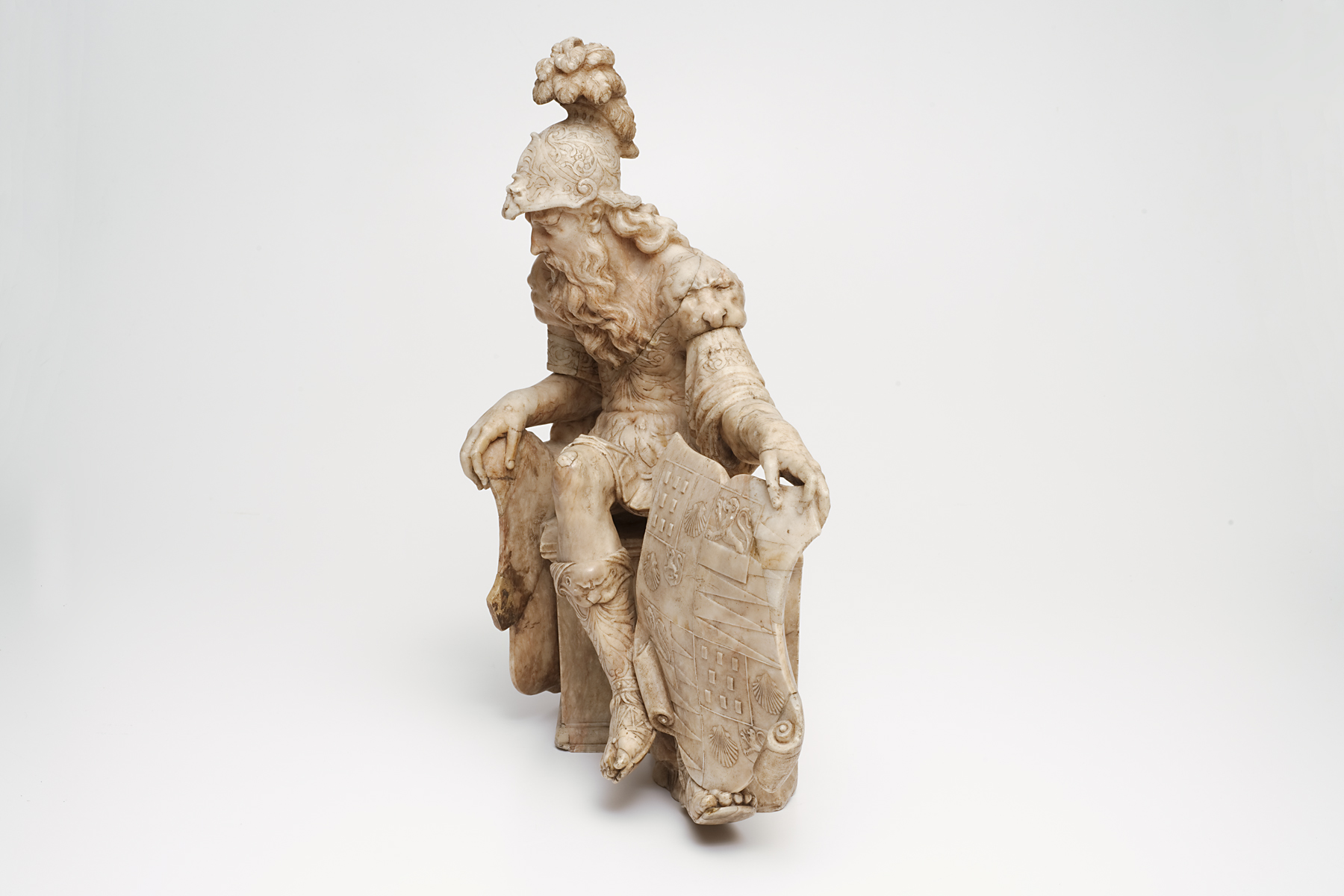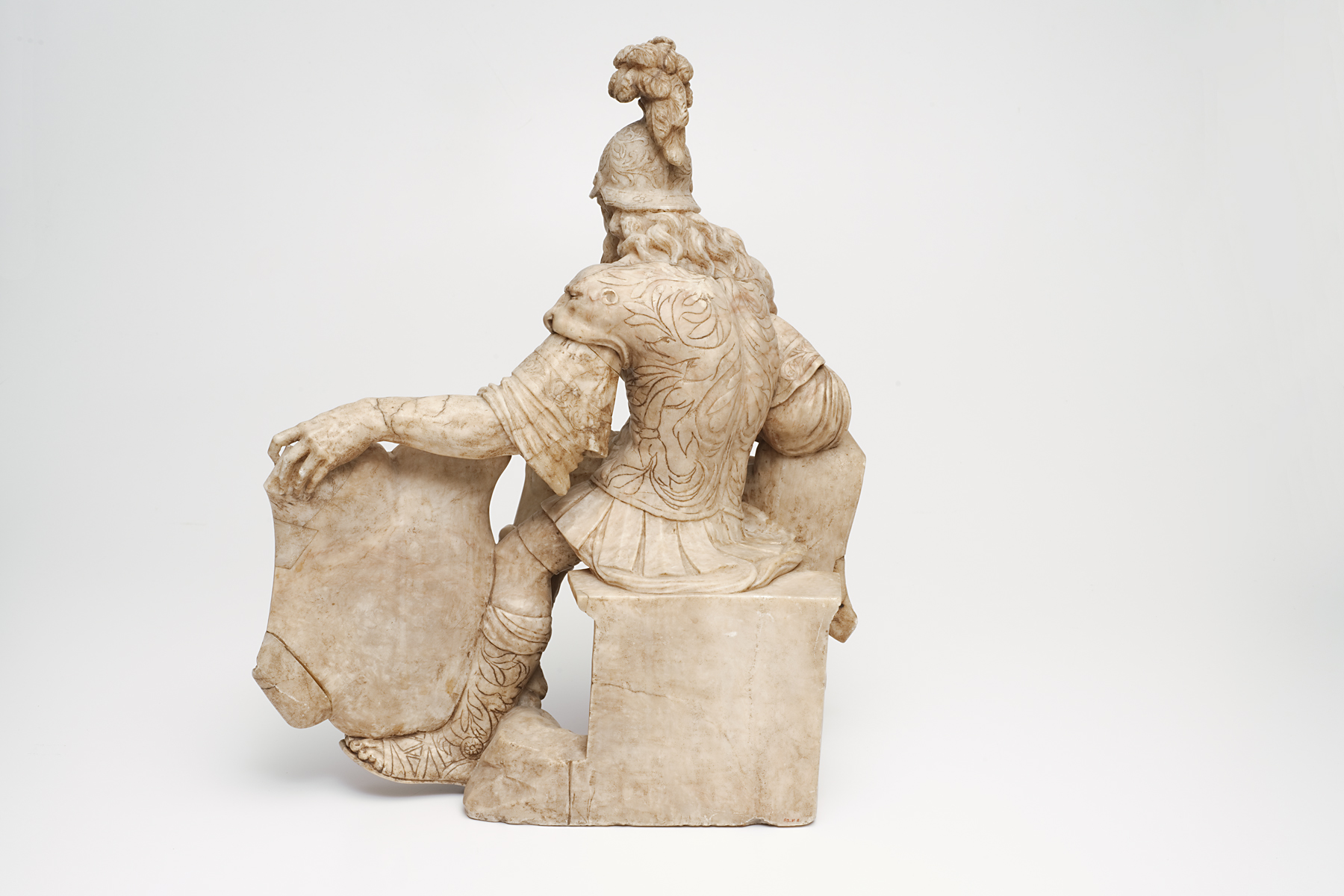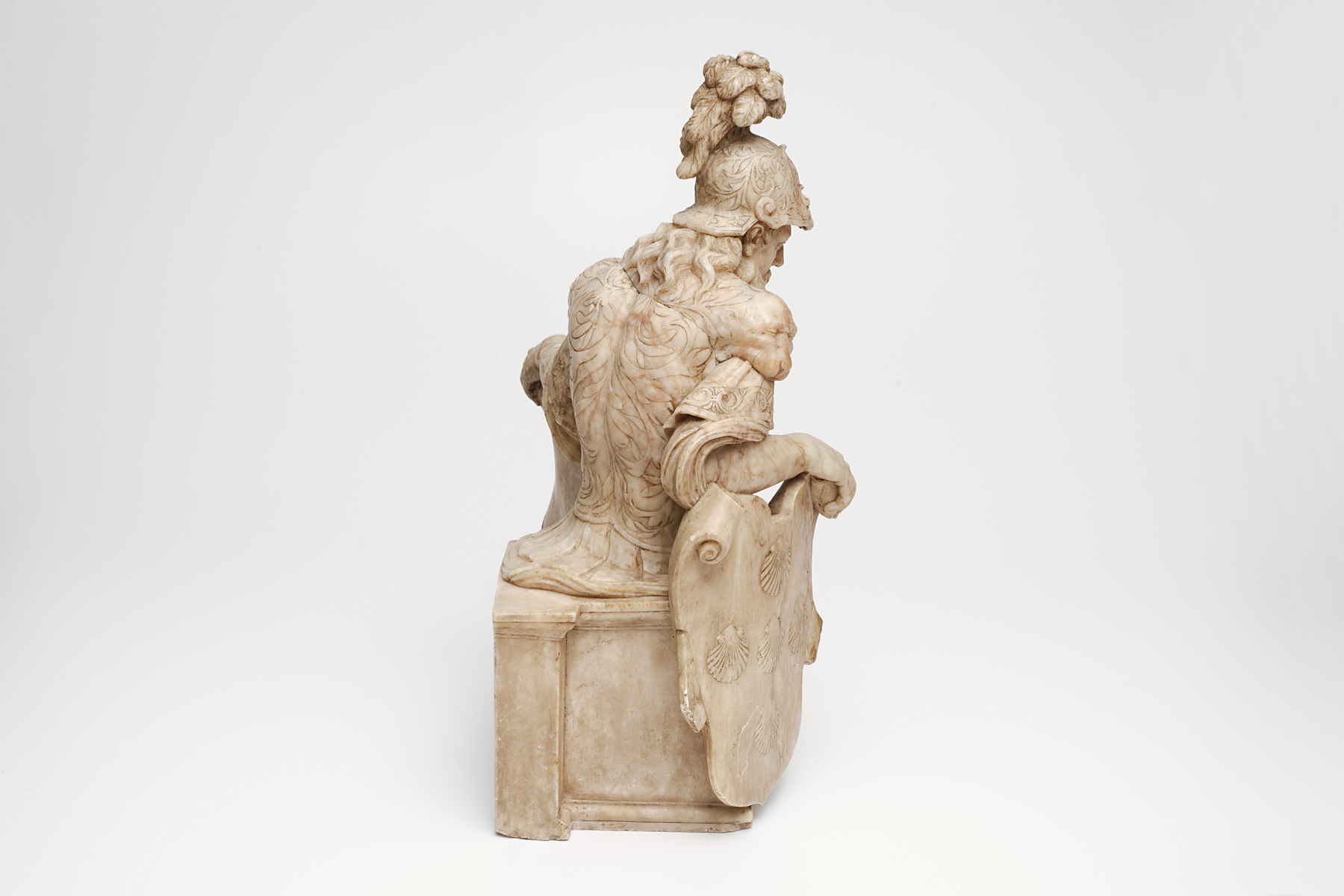Heraldic Figure with Four Coats of Arms, unknown maker from Belgium
Artwork Overview
Heraldic Figure with Four Coats of Arms
, circa 1536–1548
Where object was made: Leuven, Duchy of Brabant (present-day Belgium)
Material/technique: alabaster
Dimensions:
Object Height/Width (Height x Width): 48 x 30.8 cm
Object Height/Width (Height x Width): 18 7/8 x 12 1/8 in
Object Height/Width (Height x Width): 48 x 30.8 cm
Object Height/Width (Height x Width): 18 7/8 x 12 1/8 in
Credit line: Museum purchase
Accession number: 1958.0031.02
Not on display
If you wish to reproduce this image, please submit an image request







